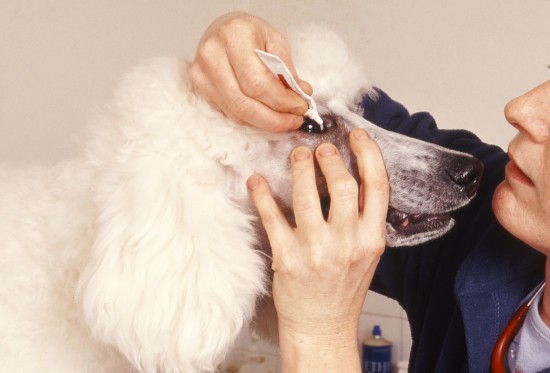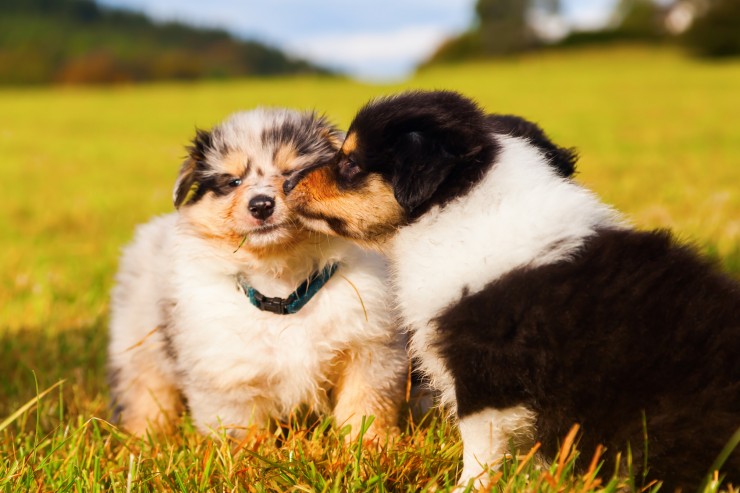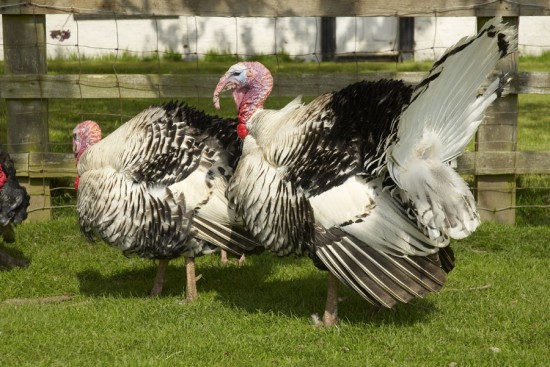

Many dog owners run into problems trying to administer pills and other oral medications to their dogs, and much is written on how to go about this with a view to making life easier for both dog and owner. However, two issues that are much less commonly explained to the owner are how to administer eye drops or eardrops to a dog, two situations that can be just as challenging, if not more so! Over the course of the average canine life, many dogs will require the administration of eye or ear medications, for issues such as conjunctivitis or injuries to the eye, or ear mites or an excessive wax build up within the ears.
If you have just returned from the vet with a bottle of medication, a reluctant dog and a total lack of inspiration on how to introduce one to the other, don’t despair. Read on for our tips on how to successfully administer eye drops or eardrops to your dog.
First of all, remember that either eye drops or eardrops involve dealing with the “pointy end” of the dog! Any activity that requires taking your dog outside of their comfort zone or doing something strange to them can cause even the most good natured of dogs to snap, particularly if they are not feeling well or the area that you need to medicate is painful.
It can be helpful to have a second person available to help you, particularly the first time that you try to administer the drops until you know how your dog will react, and you should strongly consider muzzling the dog if necessary to keep yourself safe while you do so.
While having either eye drops, lotion or eardrops administered is going to be rather an unpleasant sensation for your dog regardless of how you go about it, do what you can to make it as easy as possible. Ensure that you have everything you need to hand so that you only need to go through the process once, and that the liquid or cream is not too cold, to minimise the discomfort.
When administering medication directly to the ear of the dog, it is important that the liquid goes right into the ear itself, rather than simply sitting on the surface. Having any liquid or substance poured into the ear is an unusual and fairly unpleasant sensation, as any person who has needed eardrops themselves will know- so it is vital to have help on hand if necessary, as not all dogs will react well to this!
 Tips On How To Care For Newborn Puppies
Tips On How To Ca
Tips On How To Care For Newborn Puppies
Tips On How To Ca
 Chicken Houses - for this Summer and the Ones to Come
Chicken Houses - for this Summer and the Ones to Come
Chicken Houses - for this Summer and the Ones to Come
Chicken Houses - for this Summer and the Ones to Come
 Give your interior a new look with Aquarium
Give your interior a new look with Aquarium
If
Give your interior a new look with Aquarium
Give your interior a new look with Aquarium
If
 Feeding And Nutrition Of Senior Dogs
Feeding And Nutri
Feeding And Nutrition Of Senior Dogs
Feeding And Nutri
 How Easy Is It To Keep A Turkey Or Maybe Two?
How Easy Is It To
How Easy Is It To Keep A Turkey Or Maybe Two?
How Easy Is It To
Copyright © 2005-2016 Pet Information All Rights Reserved
Contact us: www162date@outlook.com